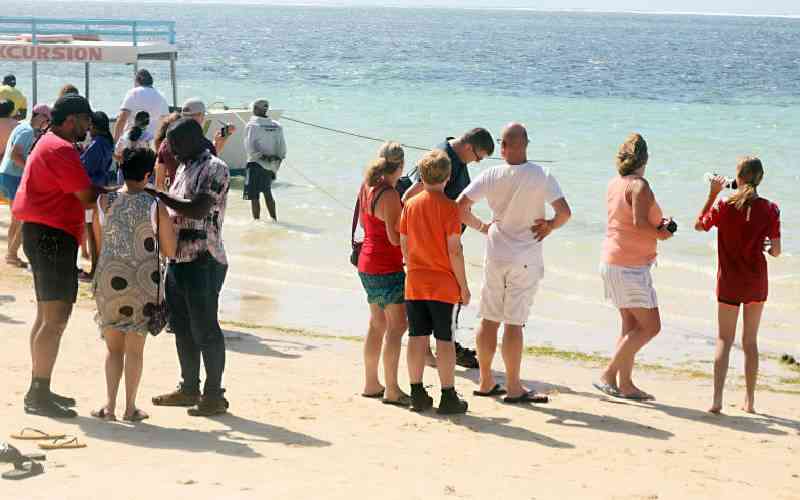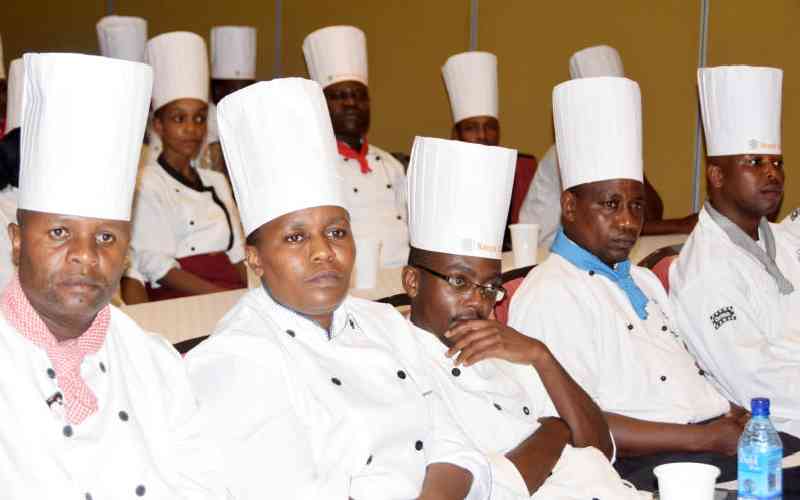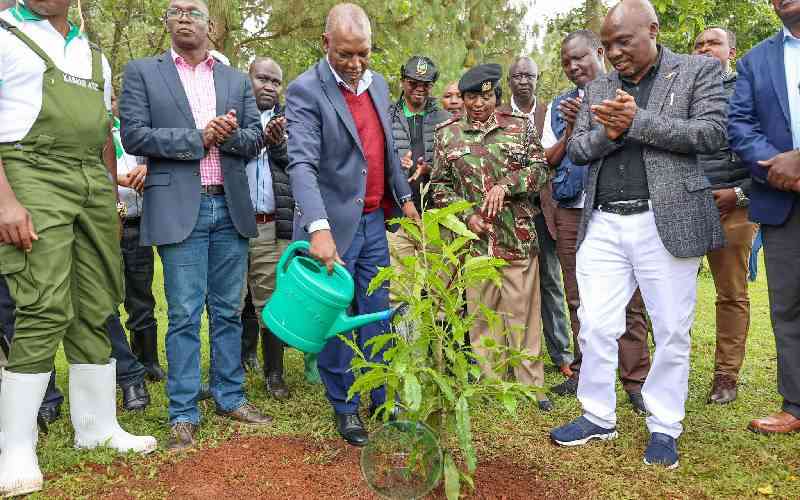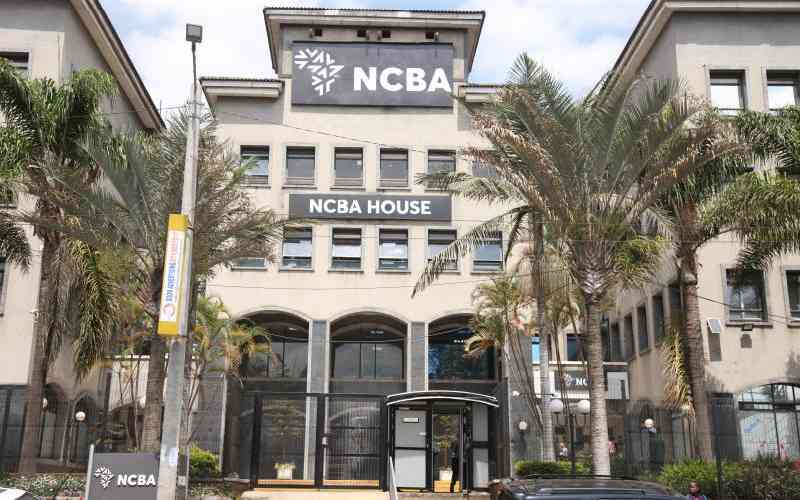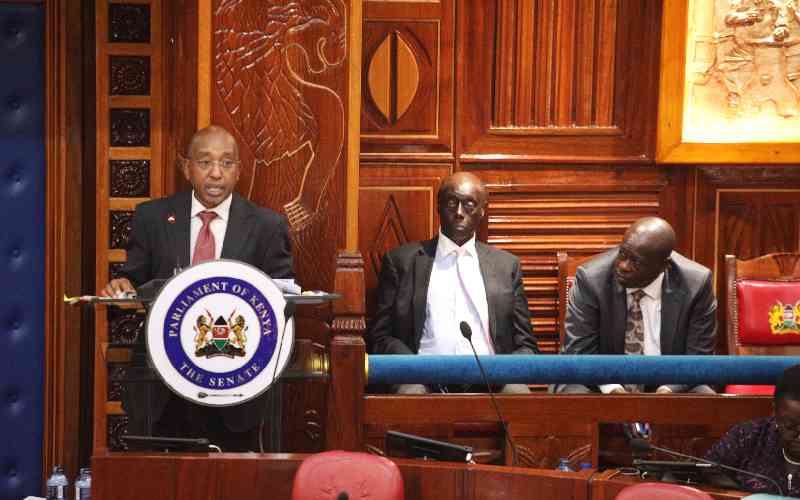As Kenya Tourist Board and other bodies market various tourist circuits in Kenya, it appears their efforts are paying dividends, writes HAROLD AYODO
It is apparent that visitors are now embracing the western tourist circuit as accommodation havens spice up the hospitality sub-sector.
For any holiday-maker, staying away from the hustle and bustle of town is the norm rather than the exception and neat getaways dot this circuit. The havens many not boast of sandy beaches or breathtaking panoramic escarpments, but what they miss in such is compensated ably in providing a quiet and serene environment just perfect for a visitor looking to unwind.
One such spot is the rural based K356 Resort located in the hills of Koru in Kisumu County.
For tourists, sampling tourist attraction sites in the expansive Kakamega and Kisumu counties is not a hustle.
It is centrally located to assorted tourism sites and it is also within one hour drive to Lake Victoria, Kisumu Museum or Kisumu Impala Sanctuary.
We set out for a weekend at the resort located amidst expansive acres of flourishing forests of indigenous trees.
We left Nairobi from the Jomo Kenyatta International Airport (JKIA) for a 30 minute flight to Kisumu International Airport before driving to Koru.
It took barely an hour to drive 69 kilometres from Kisumu town to the resort via the Kisumu-Nairobi Road and branched off to Muhoroni.
Getting there
For tourists from Nairobi using the Mau Summit-Kericho road, it is approximately 49 kilometres from Kericho.
There is also an option of using the Londiani route into Kipkelion, Fort Tenan and into Koru town.
Hidden behind thick greenery, the resort is located on a lush hill-drop surrounded by a garden with a variety of indigenous flowers and exotic palms.
There is a natural experience of life as the resort has hallmarks of traditional African décor.
There are five cottages with rich earth colours that adorn the interior with the iron wrought, hyacinth and mahogany beds.
Stay informed. Subscribe to our newsletter
Rattan chairs, handcrafted lamps and décor pieces add to a homely feeling of the get away with a rural setting.
Moreover, the K-House, which is a three bedroom family unit, is a treat to groups of friends on vacation.
Here, you can either cook for yourself or request for the in-house chef to prepare assorted delicacies during your stay.
For the evening, we lounged at the Frog Bar next to the dining room, which is a relaxed and open setting.
There’s also an extension of the mini bar comprising of two private gazebos for quiet and relaxed refreshments.
Drinks are served against a background of soft African and international music as the assortment of beer, wine, whiskey, brandy, rum, juices and soda flow.
Varied attractions
A chat with the proprietors — Col Bosco Odhiambo and his wife Joyce — offers insights into the rural resort with a vantage position to reap from the western tourist circuit.
“We have a neighbour who is a rancher (Herman Brooke) with horses where visitors can go and ride at a fee,” Odhiambo says.
According to Joyce, excursions to the expansive circuit are organised for visitors on request.
“Our visitors include families that either want to spend a quiet weekend or sample tourist attractions during the day or retire for the evening,” Joyce says.
Dinner and breakfast the following morning were superb before we set out to sample the western tourist circuit proper.
Boat rides on Lake Victoria — the second largest fresh water lake in the world — and a stopover at the rejuvenated Kisumu Impala Sanctuary were a treat.
First woman
Kit Mikayi is about 29 kilometres west of the lakeside city, approximately a kilometre off the Kisumu — Bondo Road. Kit Mikayi is a rock formation with a staggering height of 40 metres.
Kit Mikayi is Dholuo for the stone of the first woman.
The ancient rocks that are heaped on one another are believed not to disintegrate even when there is an earthquake or inclement weather.
The myth behind the gigantic rocks is that long ago, there was an old man called Ngeso who was in great love with the stone.
Every day when he woke up, he could walk into the cave inside the stone and lounge the whole day, forcing his wife to take meals to him daily at the rock.
The old man so passionately loved the rocks that his wife would tell visitors that he had gone to his first wife (Mikayi) hence the stone of the first wife (Kit Mikayi).
From a long time, Kit Mikayi has been a sacred place for the villagers and some traditional African religious leaders to worship in times of trouble.
There is also the site where the mighty Luo warrior known as Luanda Magere from the Sidho clan in Kano plains is believe to have died.
The site with a gigantic stone buried is still revered as the spot where Luanda Magere died and people come from far and wide to conduct rituals and prayers there.
Today, the Sidho clan occupies the present sugar belt at the foot of the breathtaking Nandi escarpment.
It is believed that Luanda Magere possessed unearthly powers and his flesh was made of stone.
Arrows, spears and clubs simply deflected from his body, making him invincible during warfare. He was famously known for his capability to tear an entire army apart.
It is believed that Luanda Magere fell down and died before his huge body turned into the stone partly buried on earth at Sidho in Nyando district.
In Kakamega, the Kakamega Forest Reserve, crying stones and spectacular bull fights in villages of Sigalagala, which are held throughout the year, are among major attractions.
The bull fights are pitched battles between two bulls, each one representing an individual village.
Thronged by excited supporters, the bulls lock horns and fight until one bull turns and runs. The winning bull is led around the field in a victory lap, accompanied by a chanting, jubilant crowd.
Kakamega is a remnant forest, once linked to the great Equatorial forests of the Congo, and is home to several unique and endangered species.
The forest has resident populations of primates, including the rare red tailed monkey, butterflies, chameleons and stunning birdlife, such as the giant blue turaco.
Unfortunately, our weekend elapsed before we could drive to Suba to sample the rich Ruma National Park — the last refuge of the threatened Roan antelope in the region.
 The Standard Group Plc is a
multi-media organization with investments in media platforms spanning newspaper
print operations, television, radio broadcasting, digital and online services. The
Standard Group is recognized as a leading multi-media house in Kenya with a key
influence in matters of national and international interest.
The Standard Group Plc is a
multi-media organization with investments in media platforms spanning newspaper
print operations, television, radio broadcasting, digital and online services. The
Standard Group is recognized as a leading multi-media house in Kenya with a key
influence in matters of national and international interest.
 The Standard Group Plc is a
multi-media organization with investments in media platforms spanning newspaper
print operations, television, radio broadcasting, digital and online services. The
Standard Group is recognized as a leading multi-media house in Kenya with a key
influence in matters of national and international interest.
The Standard Group Plc is a
multi-media organization with investments in media platforms spanning newspaper
print operations, television, radio broadcasting, digital and online services. The
Standard Group is recognized as a leading multi-media house in Kenya with a key
influence in matters of national and international interest.


